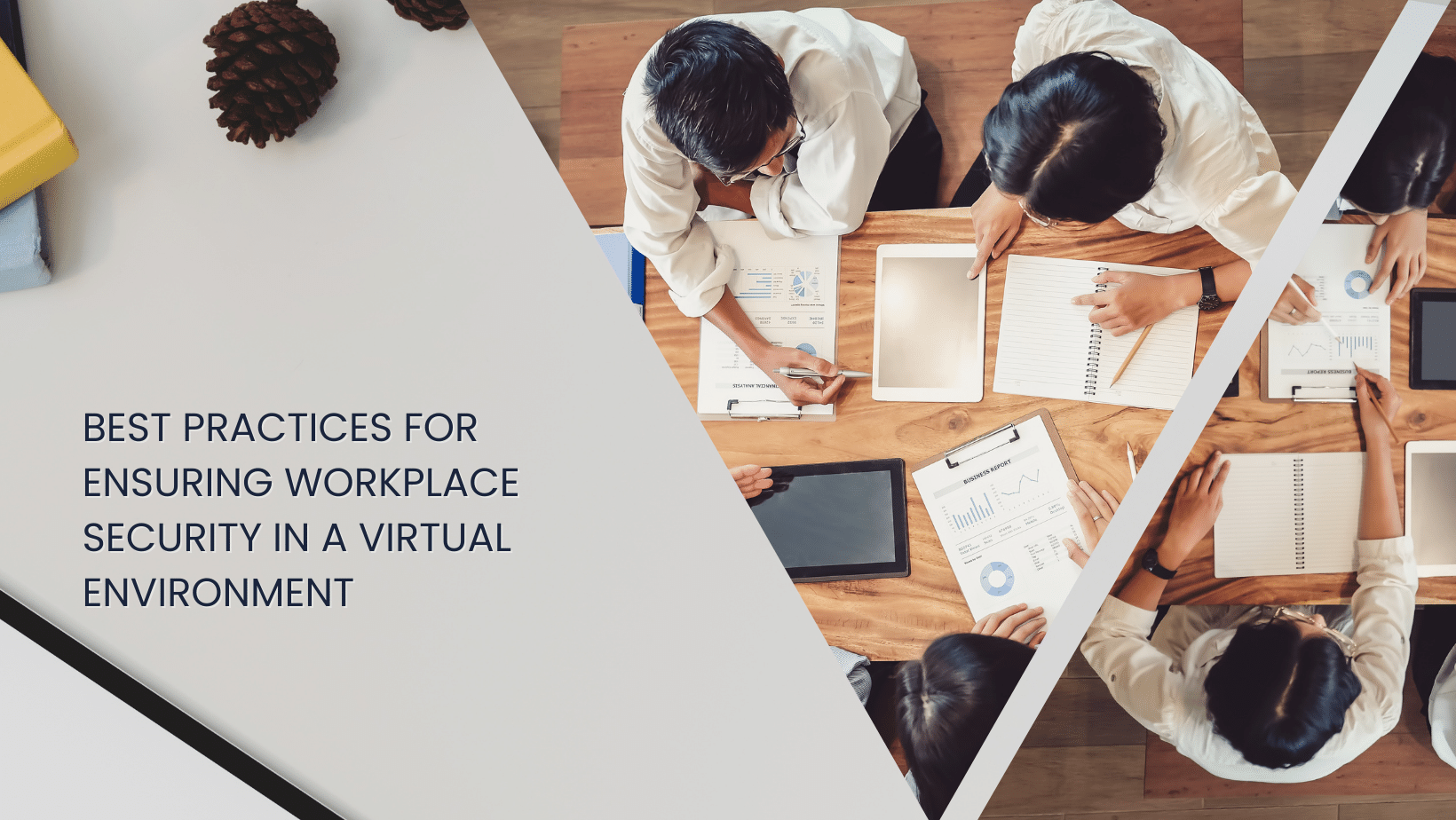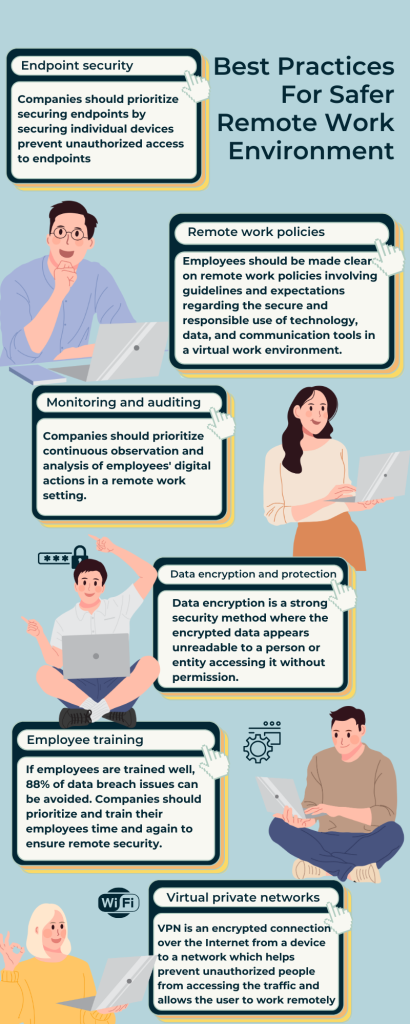
26 Dec Securing Remote Work: Best Practices for Ensuring Workplace Security in a Virtual Environment
With startup culture on the rise, work from anywhere has become the new normal. Different countries like Spain, Croatia are also giving digital nomad visas so that people can work from anywhere in the world. This has a very distinct impact on workplace security which needs to be addressed. Globally, 16% of companies are fully remote. Even now that the pandemic is over, we can see several companies embracing this model as a permanent solution to their workplace needs. The Remote Workplace Services Market was projected to reach USD 153.6 billion by 2032 from USD 20.3 billion in 2022. The increasing growth of remote work has given companies a unique opportunity to hire and leverage the global talent with broader range of experience, skills, and knowledge to drive innovation in their workplace. With the freedom to collaborate from anywhere, employees have greater opportunities for flexible lifestyles that accommodate work-life balance which has made remote working more attractive to both employees as well as the organizations. But it certainly doesn’t come without a set of challenges on its own.

62% of companies have seen an increase in remote work-related cyber-attacks since the start of the COVID-19 pandemic. Cybercriminals are using the new normal to launch sophisticated cyberattacks, and remote workers are the weakest link in an organization’s cybersecurity defenses. Remote work poses several cybersecurity threats such as phishing attacks, malware assaults, unsecured networks, and so on. To secure their data and systems from cyber threats, companies must have a comprehensive cybersecurity plan and train their employees accordingly.
On September 15th, 2022, a hacker reportedly gained control over a popular ride sharing company, Ubers internal systems and gained access to internal data that led to compromising an employee’s Slack account.
This is a clear example of how companies as well as employees need to understand the importance of cyber security and its vulnerabilities. At Frost and Sullivan Institute we commend businesses, individuals, and organizations that have adopted an innovative approach to addressing international security challenges by enhancing cyber security and mitigating and coping with change.


Best practices to ensure workplace security in virtual environment.
Endpoint security
Companies should prioritize securing endpoints by securing individual devices like laptops and desktops with strong measures to prevent unauthorized access to endpoints by setting up strong passwords, using multifactor authentication, using biometric passwords and antivirus protection. Microsoft has its own authentication application that uses biometric and password authentication such tools and applications help ensure endpoint security.
Data encryption and protection
Data encryption is a strong security method where the encrypted data appears unreadable to a person or entity accessing it without permission. The encrypted data can only be decoded by a user with the correct encryption key. As of 2023, only 22% of IT professionals reported that more than 60% of their sensitive data in the cloud is encrypted. According to the findings of a study by help net security, on average, only 45% of cloud data is currently encrypted.
Employee training for remote security
A joint study by Stanford University Professor Jeff Hancock and security firm Tessian has found that a whopping 88 percent of data breach incidents are caused by employee mistakes. This implies that if employees are trained well and are on par with cyber security concerns, UpToDate on trainings for remote security, 88 percent of data breach issues can be avoided. Companies should prioritize and train their employees time and again to ensure remote security.
Virtual private networks
A virtual private network, or VPN, is an encrypted connection over the Internet from a device to a network which helps prevent unauthorized people from accessing the traffic and allows the user to work remotely and the encrypted connection helps ensure that sensitive data is safely transmitted to intended user. In 2021, the usage rate of VPNs was nearly identical, but companies should recognize and make use of it.
Monitoring and auditing virtual activities
Companies should prioritize continuous observation and analysis of employees’ digital actions in a remote work setting. This includes tracking login attempts, file access, communication patterns, and other online activities to detect any potential security breaches. By implementing a robust monitoring system, organizations can identify and respond to suspicious behavior in a proactive manner which would help strengthen the overall security in a virtual work environment.
Remote work policies and compliance
Employees should be made clear on remote work policies involving guidelines and expectations regarding the secure and responsible use of technology, data, and communication tools in a virtual work environment. Similarly, compliance issues involving regular audits, updates to reflect evolving security standards, and alignment with relevant industry regulations should be maintained to establish a secure and legally compliant remote work environment.
While all these practices like data encryption, end point security, monitoring and auditing, use of VPNs help maintain a secure remote work environment, the employees are at the core of maintaining strong secure environment in a virtual workplace for themselves and others. Companies must encourage a proactive approach to attain virtual security in their workplaces as security is a priority for everyone, in every environment.
Blog by Shreya Ghimire,
Research Analyst, Frost & Sullivan Institute


Sorry, the comment form is closed at this time.